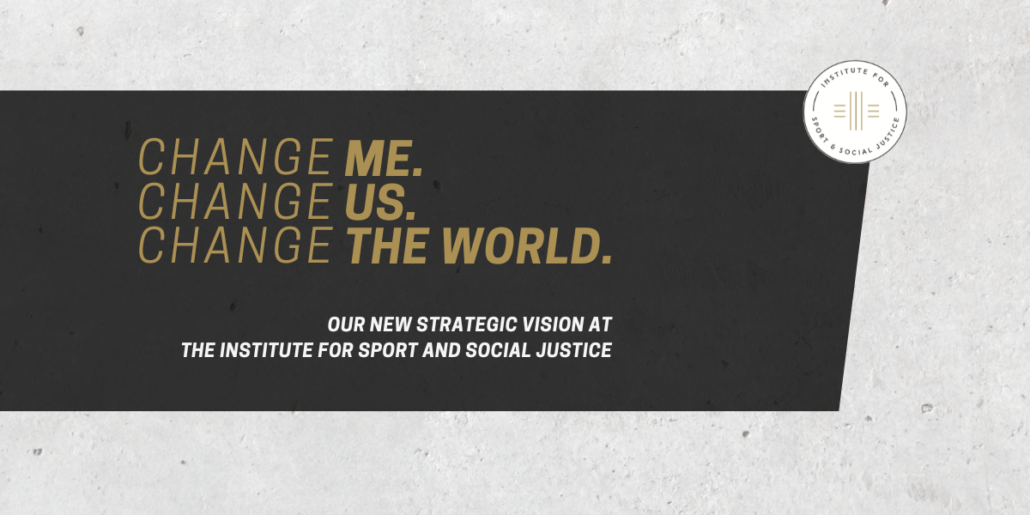It’s a new year, and that means new opportunities for your organization to build a strategic roadmap.
Strategic planning is Next Stage’s cornerstone service line. It’s a process we’ve guided more than 100 organizations through—from nonprofits and community-based organizations to health care groups and government agencies. We understand the words “strategic planning” can elicit very different reactions: for some, the process is exciting and full of possibility, while for others, it’s a daunting or even cringe-worthy task.
In recent years, strategic planning in the social good sector has faced significant disruption. The lingering effects of the COVID-19 pandemic, combined with an uncertain political environment and the looming threat of economic recession, caused many organizations to shift to a “wait-and-see” mindset, opting to rely on short-term annual plans rather than committing to multiyear strategic roadmaps. According to one recent study, up to 49% of nonprofits lack a strategic plan.
However, as we enter 2025, the external landscape has begun to stabilize. We’re operating under a new federal administration, the economy has achieved relative stability, and advancements in technology are firmly taking hold. While challenges remain for institutions working to advance social good, we’re no longer navigating in the fog of ambiguity. The near-term future has become clearer—and with that clarity comes opportunity.
So, what now? The time has come to get proactive because developing a multiyear strategy has wide-ranging benefits. One study found that 86% of nonprofit respondents believed their strategic plan positively impacted revenue generation through grants, donors, events, and other avenues.
So whether you’re contemplating your first strategic plan or looking to refresh your approach, we’ve prepared a list of four best practices for strategic planning to help your organization create a roadmap that drives real impact.
1. Listen to Your Constituents
Market research is big business—a $150 billion global industry according to ESOMAR’s Global Market Research report. And with more sources of data than ever before thanks to advancements in technology and AI, there are seemingly endless opportunities to secure key constituent insights.
That’s welcome news because regularly listening to your constituents is essential. Don’t make the all-too-common mistake of believing you already know what your key stakeholders are thinking, feeling, and experiencing. Conditions change over time, and so too do the needs and opportunities faced by the people critical to your institution’s success.
That’s why we always encourage our clients to use learnings gained by listening to their constituents to inform their operational direction. It’s more than worth the time investment because truly effective strategic planning must begin with robust primary research. This includes interviews, focus groups, surveys, and observational studies that gather diverse perspectives and insights.
And listening to your constituents shouldn’t just be a one-time thing. By regularly engaging in such activities, your organization will gain a pulse on changing needs, opportunities, and challenges. This ongoing process not only informs your strategy but also keeps it grounded in reality, making it more adaptive and actionable.
2. Include Stakeholders in Planning
As we’ve shared before, Americans have a deepening mistrust of most institutions. According to Pew Charitable Trust’s 2024 report, confidence levels across sectors remain at or near historic lows, with only modest recovery since the pandemic’s onset.
Many organizational leaders mistakenly believe their organization is immune to this trend. But the reality is, even the most trusted institutions are feeling the impact of this broader erosion of public faith.
The good news is your organization’s strategic planning efforts present a key opportunity to reverse this trend. By making the process genuinely inclusive, you can build stronger strategies while fostering authentic stakeholder buy-in. When you bring together diverse voices—staff, board members, beneficiaries, and community partners—on your strategic planning task force, the resulting roadmap better reflects the full spectrum of perspectives and voices that matter to your organization’s success.
This sense of inclusion also fosters a sense of ownership among stakeholders, which is essential for successful implementation down the road.
The 2024 whitepaper “Nothing About Us Without Us,” which examines disability representation in media and branding, powerfully illustrates this concept. While focused on the disability community, the report’s central message resonates broadly: sustainable solutions emerge only when the communities we serve are active participants in designing their future.
Because true stakeholder inclusion isn’t just about gathering input—it’s about sharing power in the planning process itself.
3. Build Belonging Through Engagement
Strategic planning is more than just charting a course—it’s an opportunity to deepen stakeholder investment in your institution’s future. When done well, it creates a compelling roadmap that inspires diverse groups to unite around shared goals and outcomes.
This has become particularly crucial amid what experts call a “crisis of belonging.” As highlighted in a 2024 Chronicle of Philanthropy article: “It’s not just marginalized populations and marginalized communities that feel a sense of not belonging; it’s also those who traditionally have been higher up in the societal hierarchy who feel they don’t belong.”
Your strategic planning process can help address this crisis by fostering genuine connection and shared purpose. But the work doesn’t end when the plan is complete. To build lasting bonds between your organization and its constituents, it’s essential to close the communication loop with everyone who contributed to the process.
Clearly communicate to stakeholders exactly how their input shaped the final plan. Make their impact visible. By acknowledging their role in shaping your organization’s future, you do more than just build transparency—you cultivate the trust and enthusiasm needed to turn strategic vision into reality.
4. Create a Launch Campaign
A strategic plan is only as powerful as its implementation. And all too often, this is where organizations stumble. In fact, according to an organizational diagnostic survey by BridgeSpan Group, staff members at more than 120 nonprofits rated their employers’ capacity to implement their strategies 10% below their average rating for all other organizational capability areas. Respondents gave their organizations especially low marks on their abilities to break down their strategies into actionable steps, communicate their vision effectively, allocate resources appropriately, and adapt to change.
To ensure successful implementation, launch your strategic plan with the energy and intentionality of a campaign. The Institute for Sport and Social Justice offers an inspiring example of this approach. Despite having a clear mission of advancing social justice through sport, they needed to unite their diverse programs under a cohesive narrative. Through Next Stage-facilitated strategic planning sessions, they developed the powerful campaign theme “Change Me. Change Us. Change the World.” This framework elegantly connected their four pillars of impact (Training & Education, Community & Youth, Global Engagement, and Knowledge Creation) into a compelling narrative that resonated with stakeholders at every level.
This campaign-style approach transforms strategic plans from static documents into dynamic forces for organizational change. When you develop a unifying theme that speaks to your stakeholders’ aspirations, your strategy becomes more than a roadmap—it becomes a rallying cry that energizes staff, inspires donors, and activates allies in pursuit of shared goals.
The time for strategic planning is now. As the external landscape stabilizes and new opportunities emerge, organizations need robust, multiyear strategies more than ever. And if the past few years have taught us anything, it’s that strategic planning should no longer be treated as a one-off exercise that happens every few years. Instead, it must become a core capability embedded into your organization’s adaptive DNA.
Is your organization looking to develop or amend its strategic plan in 2025?
Reach out today—we’d love to partner with you!
Want the latest social good trends, insights, and inspiration delivered straight to your inbox? Subscribe to the Impact Insider today!




